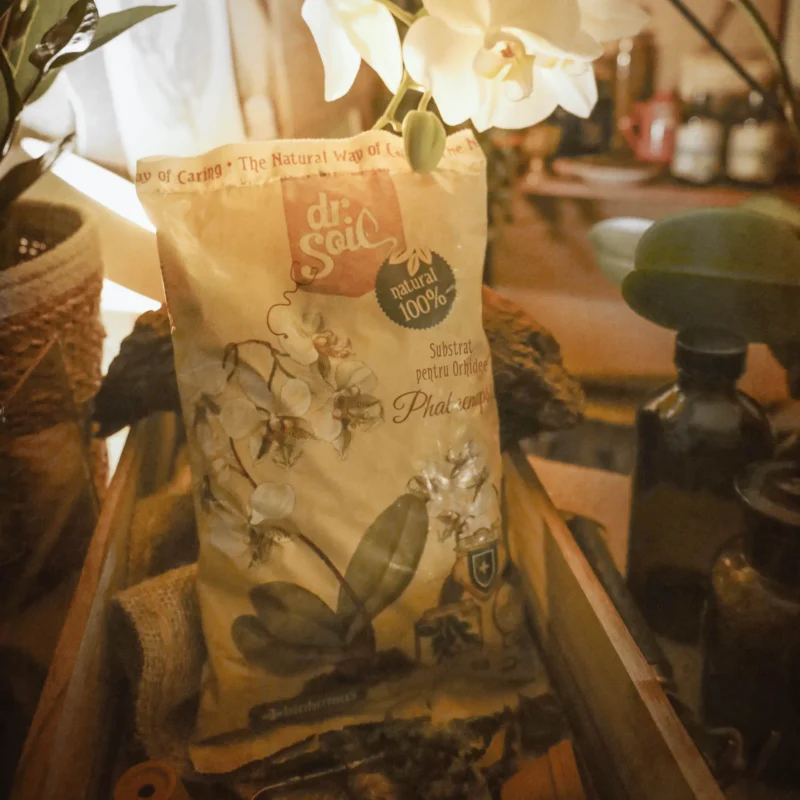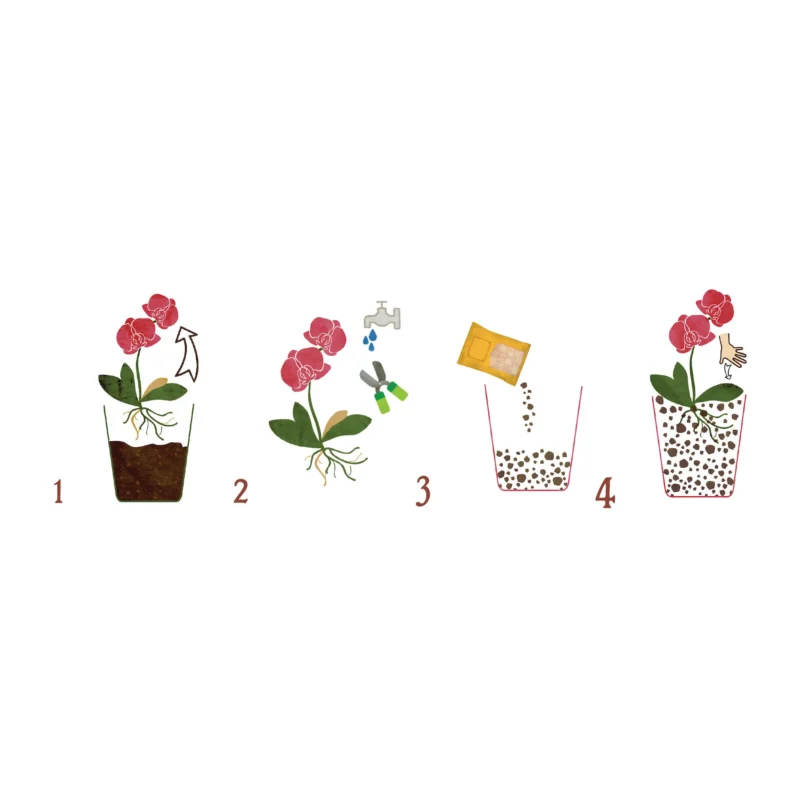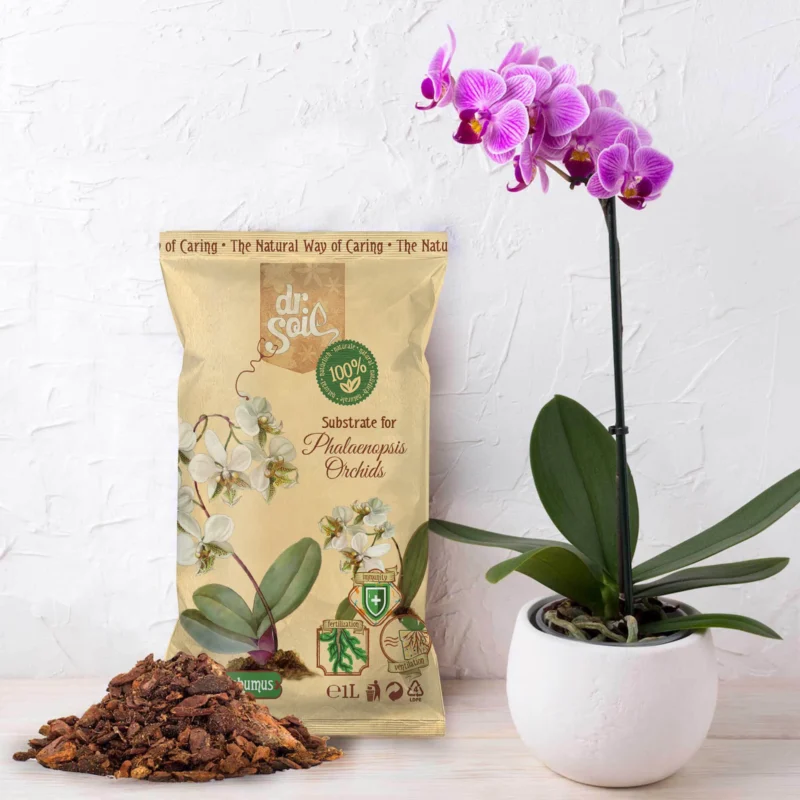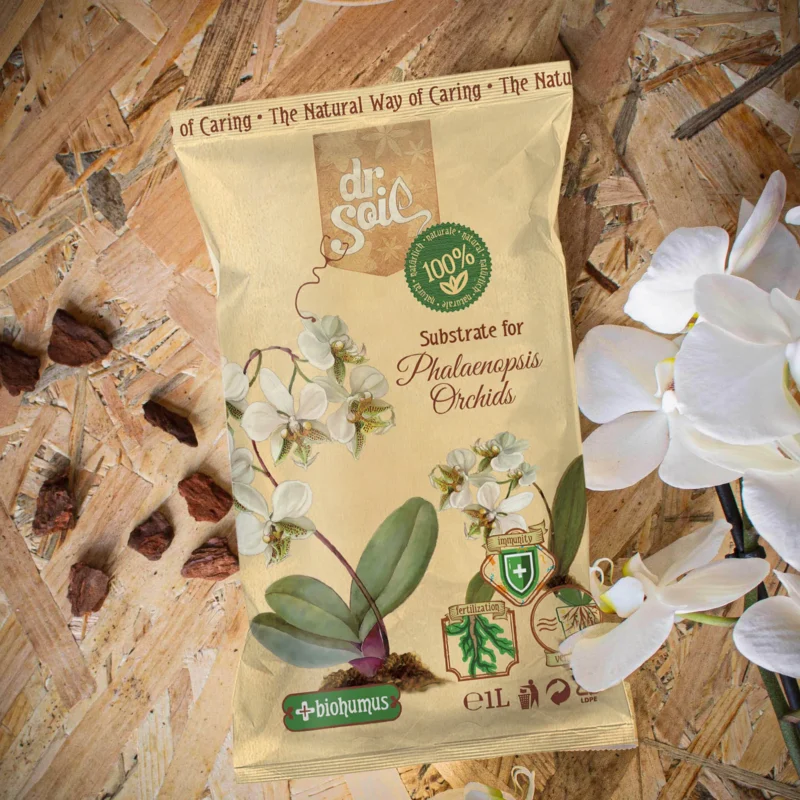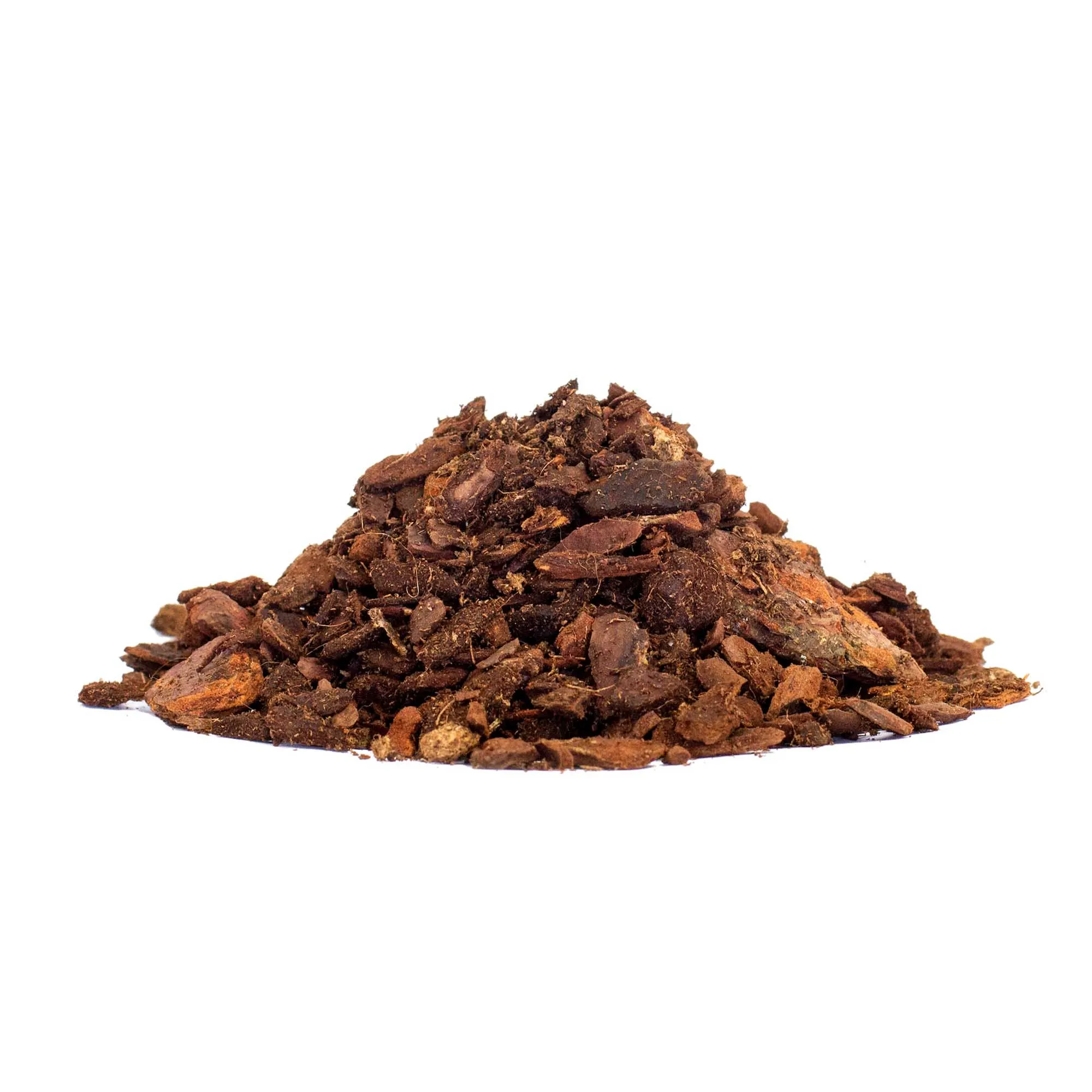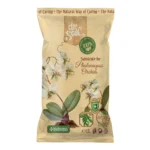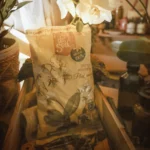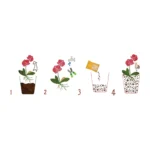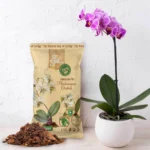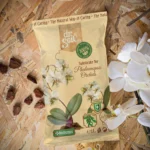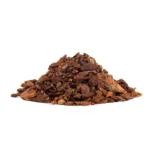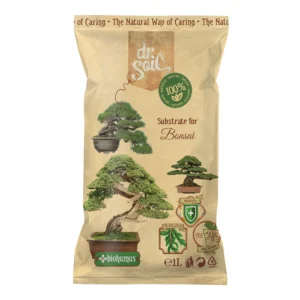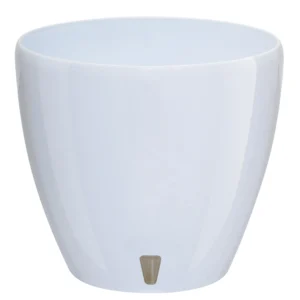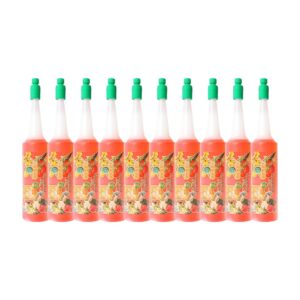Prefertilized substrate with nutrients for up to 6 months, ready-to-use
Intended for: all species of Phalaenopsis Phalaenopsis orchids (Aphrodite, Philippinensis, Sanderiana, Schilleriana, etc.) and other epiphytic orchids (with aerial roots).
Composition:
Small-grained Mediterranean pine bark (min. 80%), white peat, biohumus, organic matter
This formula states the main needs of epiphyte orchids:
maximum aeration of the roots in the container,
fertilization and natural immunity, ensured by the intake of finely granulated biohumus, rich in
nutrients, vitamins and minerals, as well as amino acids. (pH 6.7)
resistance to stress situations or diseases
How to use the substrate for Phalaenopsis orchids?
Choose a special pot for orchids, taking into account the size of the plant to be transplanted. Clean the orchid of all dead elements (leaves, roots). The root of the plant will be washed off the old substrate with warm water. A layer of the product will be placed in the new pot so as to maintain the previous planting height. Place the plant and cover with substrate, pressing lightly and evenly around it. During the first 7 days, the plant is not watered, allowing the substrate to settle naturally in the pot and the roots to adapt to the new environment. After 7 days, watering resumes normally. Fertilization is not required for a period of 6 months.
Storage conditions:
Keep the bag in a dry and ventilated space, in the original packaging.
Keep out of reach of children. Throw the packaging in the trash.
Do not store in direct sunlight.
Validity period: unlimited

![5949062706015.webp <p>Taking care about flowers can be sometimes a difficult and tricky responsibility. </p>Try our <a href="https://thegardenleague.co.uk/product/orchid-organic-soil-substrate/" title="Soil Substrate" alt="soil substrate">soils substrate</a> for Phalaenopsis Orchids <p>[cg_accordion title="Details"] Intended for: all species of Phalaenopsis Phalaenopsis orchids (Aphrodite, Philippinensis, Sanderiana, Schilleriana, etc.) and other epiphytic orchids (with aerial roots). [/cg_accordion] [cg_accordion title="Delivery & Returns"] UK Free delivery. 30 days returns. Please consult <a href="https://thegardenleague.co.uk/product/orchid-organic-soil-substrate/" title="Natural Fertilizer" alt="natural fertilizer">T & C's</a> for more details. [/cg_accordion]</p>](https://thegardenleague.com/wp-content/uploads/2024/08/5949062706015-800x800.webp)
